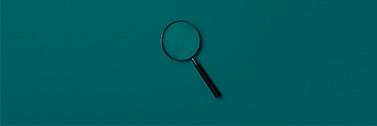‘Smart working’ is what it’s being called in the public communication, even if often it’s a long way from ‘smart’. In the past few months, it has been a totally new experience for many, a complete transformation in the way they work. But for many others, that’s not actually the case. Take, for example, the people who’ve had the chance to work remotely for a long time, coordinating geographically dispersed teams. They were already well-aware of the limits of smart working: no physical proximity, no face-to-face interaction, and no way to directly monitor collaborators.
The emergency push triggered by the pandemic has forced many organizations, both public and private, to build smart or agile work models (we’ll use these terms interchangeably from here on), testing them in the field by trial and error. These models were gradually finetuned as the weeks of lockdown went on, to the point of coming up solutions that work so well to lead many to say that from now on they’ll try to blend traditional practices with the innovative ones they’ve developed in these past months.
In order for remote working to become smart too, at least in light of the context in which it has emerged and the configuration it is taking on, it can’t simply be conceived as spatial-temporal relocation of traditional work. Instead smart working involves organizational change, and such a project has to be tackled on multiple levels.
Cleary, this does not involve simply staggering start times or rethinking support technologies for working from home. Or stepping up training throughout the organization on basic digital competencies that serve to effectively use the collaborative platforms that so many have had to grapple with. The adoption of smart working brings about changes in processes, knowledge flows, and activity sequencing to the point of radically transforming work methods. All this necessitates a deep, rapid transition to skill models centering, for example, on project-based work, autonomous management of workflows, and coordination with occasional – not continual – interaction (via the notorious calls on various platforms). The impacts of these transformations are anything but secondary. Often, in fact, we discover that some organizational levels of upper and middle management can become redundant, replaced by alternative mechanisms which are equally effective and far less costly.
We can find an interesting example of the transformative impact of smart working in a manufacturing company that shifted from a model with no potential for smart working to a hybrid model that integrates physical presence and agile work. By the end of the lockdown, the company in question attempted to maintain the equilibrium it had achieved for its manufacturing activities, recognizing that smart working had accelerated organizational simplification, fostered delegating tasks, and multiplied work in interdepartmental teams. But although organizational agility benefits from the reconfiguration of the activities associated with smart working, there are possible distortions that need to be kept in check.
First of all, there’s the problem that people lose out on social relationships in the workplace, which aren’t simply motivational levers or sources of satisfaction - they also encourage people to adopt extra-role behaviors and manifest organizational citizenship. It’s true that many people appreciate the better balance between private life and work demands made possible by smart working, but they also lose countless opportunities for social contact that have to be compensated for in some way. After months of working from home, the risk is that people lose sight of the meaning of what they do or feel less like members of their organization and their team.
Yet it’s not only about the social relationships, but also knowledge management, with particular reference to tacit knowledge. The extension of smart working is revealing the value of informal interactions, casual encounters, which are useful for internal coordination and conveying information that’s hard to communicate in writing or via video calls. Many have shown that sharing the same physical space makes interaction much more effective in times of high intensity, such as conflict resolution, feedback sessions, or decision-making in the face of uncertainty. This type of situation calls for “broad band” communication that virtualization renders so challenging.
What’s more, in contexts that have gone “remote,” what becomes clearly apparent is the problem of measuring productivity and performance. Any number of companies are wondering how they should modify their metrics, having lost almost any form of direct control over the input of their collaborators as well assessments of the work they do. Every manager has had the (sometimes very negative) experience of losing nearly all ability to observe the behaviors of collaborators, which, despite the evolution of performance measurement systems, is still one of the most reliable methods. Direct observation lets managers see firsthand the intensity of work, the level of engagement, the relational models with co-workers, the tendency to take on extra-role tasks or responsibilities, the aptitude for helping and supporting colleagues. And that’s not all. The physical presence of managers and collaborators working in the same space allows for immediate feedback, efficient checks to catch mistakes and rapid adaptation to unforeseen variations.
To understand how to substitute this mechanism with others, companies need to get back to the basics of performance measurement and the related organizational aims of aligning individual and group/organization objectives while guaranteeing fair treatment for all. This doesn’t necessarily mean introducing new metrics (in many cases, the objectives stay the same, even if they’re pursued in different ways), so much as changing the way to handle the process of target setting/performance management. The first need that comes up here, which almost goes without saying, is to utilize the metrics, most of which are already in place, with greater intensity and rigor. Next, companies need to rethink how frequently they assign and measure targets; in a smart working context, the timeframe for adjusting expectations to results can’t be annual or even semi-annual, as per tradition. Cycles need to be far more compressed to monthly or weekly intervals, and linked to mid-range targets. In other words, the cycle for setting targets and measuring relative progress has to be condensed into very short segments.
The operational implications of this change are not marginal ones. In fact, it means breaking down annual macro-goals into much shorter intermediate milestones, or identifying and measuring short-range project activities that in some way move in the same direction as macro-goals. What emerges in both cases is a performance assessment process that looks very much like what we find in organizations that work on the basis of projects instead of continual processes. Naturally, this imposes an increase in the intensity and frequency of the communication flow between supervisor and collaborator, because inevitably the focus shifts to measuring outputs instead of behaviors. To be effective, this change requires delegating more and trusting more, because the boss has to accept the fact that her collaborator is more target-driven and less focused on following orders or guidelines.
So the sort of situation that emerges seems paradoxical, but appearances can be deceiving. On one hand, agile or smart working moves the accent of the measurement process, placing it on parameters that are more objective, short-term, and if possible quantitative (i.e. impersonal). On the other, the system requires greater orientation toward trust and an alignment of values between managers and collaborators. In fact, thanks to smart working, even highly administrative jobs are becoming like intellectual professions where outcomes are not easy to measure (think of researchers, doctors, consultants, creative people, and so on).
Every time we act out of trust, we are more vulnerable to opportunistic and inappropriate behaviors. With smart working, trust means reinforcing the expectation that, despite the distance and limited control, collaborators are doing the best they can. Without this trust, any action based on highly rigid performance management mechanisms risks being perceived as de-motivating, diametrically opposed to empowerment, which is a must in this new age in the work world.
To disseminate a climate of reciprocal trust, here are some measures to adopt:
- Increase investments and focus on establishing and communicating values.
- Provide greater support for area managers, expanding company leadership in HR management.
- Consider introducing peer-to-peer or 360° feedback mechanisms.
- Step up the frequency of periodic skills assessments and certification.
- Amplify the opportunities and the time dedicated to social relationships and internal communication.
Summing up, trusting collaborators, actively managing expectations, verifying intermediate performance and providing frequent feedback – all this combined can constitute an effective starting point for managing people and teams in the age of smart working.
Roberto Ravagnani is Partner Key2People




